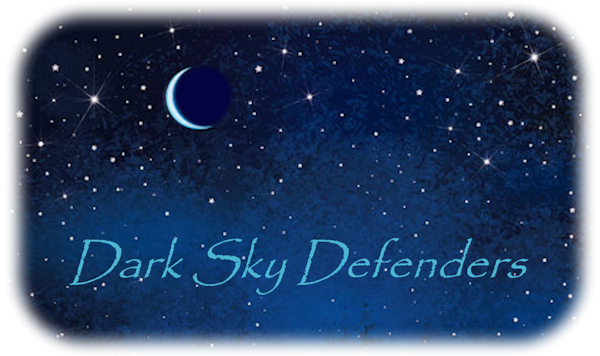|
DarkSky Oregon is lobbying Columbia River Gorge communities to adopt policies that would reduce nighttime illumination  Night lights: Looking east from Burdoin Mountain across the Columbia River at the lights of Mosier, Ore. The bright, white glow on the horizon (center) is the light dome over The Dalles, Ore. The bright spot to the left at river level is Lyle, Wash. The orange glow on the horizon left of Lyle is from Goldendale, Wash., 30 miles distant with a contribution from Washington’s Tri Cities, 120 miles distant. Photo: Mike McKeag By Jim Drake. July 18, 2024. Two Gorge residents in Oregon are trying to convince officials that light pollution is on the rise and that adopting “dark sky” policies for outdoor lighting will help bring traditional nighttime back to the Columbia River Gorge. Mike Hendricks of Hood River and Michael McKeag of Mosier have been organizing community outreach programs and collecting years of nighttime sky-quality data to promote the work of DarkSky Oregon, a chapter of DarkSky International, dedicated to reducing light pollution “for the health, safety and well-being of all life.” According to Hendricks, the view of the night sky is better in Hood River than in big cities, but he’s afraid if rural communities don’t act now to reduce the ever-expanding impact of lighting at night, the beauty and majesty of the Milky Way will fade from view. Generations will be left without an opportunity to be inspired by the stars. Hendricks started a local advocacy group, DarkSky Gorge, to raise awareness, and is encouraged by the 85 members so far. “I joined in this effort because I love the dark sky at night, it’s really nothing more complicated than that. I’m lucky enough to have a view of the sky from our deck and when you look at it, you understand your place in the universe,” says Hendricks. How lights impact wildlife It turns out light pollution causes more problems than just having a negative impact on viewing the night skies. Scientists have amassed a body of research showing that unintended consequences of Artificial Light At Night (ALAN) is creating a host of environmental problems. These include interfering with bird migrations, significant decreases in insect populations, changes in nocturnal animal behavior and sleep patterns, throwing normal predation/prey relationships into imbalance, decreasing nighttime pollination processes, disrupting aquatic populations and even changing the foliage cycles for trees. “My colleague, John Barantine at DarkSky Consulting (and formerly with DarkSky International), has compiled a database of more than 5,000 papers on ALAN research, and he produces a yearly summary of major findings,” says McKeag. Humans aren’t immune to changes in the nighttime sky. Extra exposure to light during what should be dark nighttime conditions can affect melatonin levels, important in many hormonal body functions. And in a sort of ironic technological twist, modern LED lights, which account for energy savings, can produce a spectrum of light that has higher levels (than previous bulbs) of blue light, which is the normal color of daylight. Studies show that exposure to blue light (420-440 nanometer wavelength) from LED bulbs can suppress melatonin production, interfering with natural sleep cycles and circadian rhythms in humans and animals. Monitoring Gorge skies Efforts to measure and document the nighttime sky conditions affected by light from cities, buildings, streetlights and other outdoor lighting sources are being led by groups like DarkSky International and their state chapters. DarkSky International has an interest in returning the night sky to conditions that allow a clear view for all to see. Today’s nighttime view is impacted by light domes that emanate from cities and can have an impact hundreds of miles away. Stray light and light from upward facing fixtures can be reflected by clouds and interact with dust particles creating “skyglow.” With the use of satellite data and monitoring stations on the ground, a picture of light pollution impact is being developed. The DarkSky Oregon Chapter has been collecting, analyzing and charting light pollution data for at least five years. Since 2019, DarkSky Oregon co-founder Bill Kowalik and McKeag have worked on the chapter’s Sky Quality Meter Program. An estimated 10 million data points have been collected pertaining to overall night brightness for 53 locations in Oregon. By combining remote sensing information from satellites and data from a network of Sky Quality Meters, McKeag and colleagues were able to summarize measurements from 2012 to 2020, showing a 30% increase in “uplight” in the Columbia River Gorge National Scenic Area. McKeag says at least three years of data is needed to measure a statistically significant trend among Gorge communities. “At the top of the list [for artificial light at night] is The Dalles, and second is Hood River,” says McKeag. More data will be collected in 2024. “DarkSky Oregon will be extending our statewide network of night sky monitoring stations to include sites at intervals the length of the Columbia River Gorge National Scenic Area, with installations starting this year,” says McKeag. Promoting dark skies In past years, McKeag has worked with the city of Mosier to get a Dark Sky Community Certification, presented his Sky Quality Meter data to the Gorge Climate Action Network and spoken with staff from the Gorge Commission (in charge of overseeing policies for the Columbia River Gorge National Scenic Area) about sky-quality data. “There was interest from the Gorge Commission to look at the sky-quality data as it pertains to Key Viewing Areas, and the commission admitted that they didn’t really think about how the KVA would look at night,” says McKeag. McKeag visited with staff at Timberline Lodge on Mount Hood in order to get the facility to turn off the ski slope lights during a Rose City Astronomy stargazing event. “It was a chore for them to even try and figure out how to turn them off, but they did it, and people got to experience the transition of what you could observe in the sky when the lights went out. It was educational on how different it was,” he says. McKeag says Travel Oregon is vigorously promoting dark sky tourism in rural areas. “One of the resources they have is dark skies, and they could even be darker if they made changes to their outdoor lighting,” he says. “Urbanites are aware of the rewards, and they’re willing to travel and spend money when they do.” Changing lighting codes An additional byproduct of light pollution is wasted energy. DarkSky organizations say one-third of all outdoor lighting is useless because the light is not directed at the right place. It’s common to have too much light switched on for an intended purpose—the use of dimmers and timers could result in significant savings. The group calculates that the planet became 9% brighter at night from 2012-19. That’s a good reason to urge the City of Hood River to take a look at adopting Dark Sky outdoor lighting requirements, says Mike Hendricks. He points to the recent adoption of outdoor lighting codes by the city of Sisters, Ore., which incorporates Dark Sky lighting recommendations and has a five-year timeline for getting all public and private outdoor lighting up to DarkSky codes. The codes allow temporary lights for holiday decorating and provide exemptions for security purposes, but eliminate upward-pointing light fixtures, searchlights and laser-light devices that extend past property boundaries. “Right now, our codes in Hood River don’t really address outdoor lighting,” says Hendricks. “I’ve been having talks with our city planner and they have a copy of the recent outdoor lighting code [adopted in Sisters].” “We’ve even approached the Port of Hood River on lighting for the new bridge, and from recent public meetings their aesthetics committee has incorporated some of our Dark Sky lighting language into account. It will be interesting to see their report, which is due in coming weeks.” McKeag is an avid photographer and is involved with regional astronomy clubs that rely on dark skies for star parties and other community outreach events. “I’ve taken long-exposure photographs from the Dalles Mountain looking across the light pollution from The Dalles and you can see the light dome of Portland,” says McKeag. “It’s so large, you can see it from central Oregon. In fact, I was just looking at a photograph that a person had taken from the south rim of Crater Lake looking across Wizard Island. Looking to the northeast you can see a conspicuous yellow blob on the horizon.” He believes communities can work together to make dark skies a reality for the Gorge. “Light pollution isn’t stored in the atmosphere or water or soil, so it really is the easiest form of pollution to address. It’s really just the flick of a switch, and it’s getting people to stop and think about it,” says McKeag. “We’re making arguments against light pollution based on evidence, not just opinion, and we’re trying to provide people with the firsthand experience of a dark sky, hoping to turn them into advocates. In turn they should tell their public officials that Dark Sky policies are a good idea.” This story originally appeared in Columbia Insight, but has been corrected for minor errors. Home to millions of people, and like most all such places, Los Angles has some of the worst Artificial Light At Night (ALAN) issues in the country. But thanks to caring people and enlightened political leadership, LA has begun the steps needed to educate the public and protect what's left of its night sky natural heritage. BY ALEXA ROBLES-GIL 04.22.2024 UNDARK Light pollution is threatening the future of astronomy. Can a new nationwide lighting standard make a difference? GROWING UP in Chile’s Atacama Desert, Paulina Villalobos thought the Milky Way’s presence in the pristine starry skies was a given. Her father, an amateur astronomer, would wake her when a comet crossed the night sky. But Villalobos later moved to Santiago, the capital, to study architecture. There, the stars disappeared amid a haze of city lights. Just like people who come from the coast miss the ocean, she said, “I missed the sky.” The extraordinary darkness that sheaths the Atacama, which stretches for hundreds of miles in Chile’s north, has made it a haven for astronomers searching for planets and stars shimmering in the night sky. With its high altitude and clear skies, the region is repeatedly chosen as a site for observatories. According to some estimates, by 2030, Chile will be home to around 70 percent of the world’s astronomical infrastructure. Yet even here, skyglow from hundreds of miles away can overwhelm the faint light emanating from astronomical objects. Now, a new regulation aims to darken the night skies. In October, the Chilean government announced a new National Lighting Standard that will become effective later this year. The updated standards expand restrictions on light luminosity, color, and the hours they can be turned on to protect three major concerns: astronomy, biodiversity, and human health. According to some estimates, by 2030, Chile will be home to around 70 percent of the world’s astronomical infrastructure. For astronomers, the stakes can feel high. While the Atacama offers a window to answer fundamental questions about the origin of life, that window is at risk of closing in the next 50 years due to increasing light pollution, said Chilean astronomer Guillermo Blanc. Worldwide, the sky is estimated to get brighter by 10 percent on average each year. The new rule on light pollution in Chile was informed, in part, by a technical advisory committee, which included astronomers and other scientists — Villalobos, who is now an architect and lighting designer, among them. The new regulation, she said, offers “the possibility of recovering the sky.” SINCE THE 1960s, the Atacama Desert has been an important hub for international astronomy. Today, the region, which boasts more than 300 clear nights per year, hosts some of the world’s most significant observatories, including the internationally funded Atacama Large Millimeter/submillimeter Array and the European Southern Observatory, the latter of which is currently developing the Extremely Large Telescope, set to open in 2028. NOIRLab, a United States government-funded program, also operates two facilities in the Atacama. The National Science Foundation has invested more than $500 million to build a third facility, the Vera C. Rubin Observatory, which is expected to see first light later in 2025. Yet it too is threatened by light pollution, said Blanc, who works at the Las Campanas Observatory. Those problems are global; worldwide, two-thirds of major professional observatories are affected by levels of light pollution that exceed the expected natural levels, according to a 2023 review. While many observations now take place from telescopes orbiting Earth, ground-based telescopes are still essential to interpret observations from those space-based telescopes. And if the sky’s natural brightness increases, it’s harder to observe faint objects, such as distant galaxies forming on the far edge of the universe or gas orbiting around black holes. Some observations will require more time — and greater investment: “If you have to spend two nights instead of one night to observe a faint thing because the sky is now artificially brighter, that costs money,” said James Lowenthal, a professor of astronomy at Smith College who also leads the Light Pollution subcommittee for the American Astronomical Society. “We’re talking literally billions of dollars at stake — at least tens of millions of dollars.” “The outlook today is very worrisome in 20, 30, 40 years.” Others might become impossible without better technology: “We are directly cutting the possibility of seeing certain phenomena,” said Rodolfo Angeloni, an assistant scientist at NOIRLab’s Gemini Observatory Southern Operations Center who studies stellar astrophysics and the effects of light pollution on the Chilean sky. “If a sky reaches a certain threshold of brightness, the telescopes installed in the area are simply no longer able to do frontier research.” He cited the Mount Wilson Observatory in California, where the Milky Way galaxy was first measured, as an example. The extraordinary growth of Los Angeles brought significant levels of light pollution. Today, observatories in California have to work with a brightness in the sky that was previously nonexistent. Chile, however, has other plans. CHILE’S NEW regulation on light pollution builds upon a previous rule that only protected certain key astronomical sites. The new regulation, in contrast, will apply nationwide. Its aim is not to blackout La Serena or Santiago, some of Chile’s major cities, but to use specific lighting to reduce negative effects. In 2019, when the Ministry of the Environment began revising the regulation, Chile took a step towards addressing the problem by incorporating light as a legal pollutant. Over 83 percent of the world’s population lives under light-saturated skies, but light is not normally seen — and legislated — as pollution. Many advocates say that it should be.  The distant glow from several cities is seen from NOIRLab’s Cerro Tololo Inter-American Observatory in Chile. The country’s new regulation on outdoor lighting dictates the direction, brightness, and color spectrum of lights in an effort to protect biodiversity and human health, in addition to astronomy. Visual: CTIO/NOIRLab/NSF/AURA/D. Munizaga The sky “is as polluted as, for example, a river that is full of garbage. It’s as polluted as living next to a factory,” said Felipe Loaiza Arias, who works for Chile’s Ministry of the Environment and helped craft the legislation. The distant glow from several cities is seen from NOIRLab’s Cerro Tololo Inter-American Observatory in Chile. The country’s new regulation on outdoor lighting dictates the direction, brightness, and color spectrum of lights in an effort to protect biodiversity and human health, in addition to astronomy. The 2023 regulation also recognized that astronomy is not all that’s at risk. Two other focuses were incorporated: biodiversity and human health. Reduced artificial light could aid migrating seabirds, like Markham’s storm-petrel that nests in the Atacama Desert; thousands die each year because of city lights, putting them at risk of extinction. And light pollution also interferes with the circadian rhythm of humans and other species. The restrictions apply to all outdoor lighting, from the small-scale, such as streetlights, to the large, like mining facilities. Lamps cannot be directed towards the upper hemisphere, and the law regulates their luminosity and color spectrum. Lighting can emit no more than 7 percent of blue light, and in Special Protection Areas, which include astronomical sites and protected areas for biodiversity, it’s limited to just 1 percent. But there is a major constraint that Blanc and Angeloni agreed on: oversight. Does Chile have the resources to oversee correct lighting all over the country? Loaiza Arias recognized it as a challenge. These types of regulations are massive and ambitious in terms of the sources of light they regulate, Loaiza Arias explained. And because the regulation has limited application when it comes to lights that are already installed, the measures, he said, are more so preventive. For some people, like Villalobos, more work could be done. Although the regulation is positive, she said, it only oversees individual lights and overlooks the collective light pollution from a facility. If people were aware of light pollution, she says, the issue might be easier to tackle. Often, urban dwellers are not aware of how over-illuminated their cities are. The use of lighting that is brighter than needed, or turned on at unessential times, has caused a widespread global fog of light. According to one 2016 study, an estimated one-third of the world population cannot see the Milky Way, including 60 percent of Europeans and nearly 80 percent of North Americans. ALTHOUGH CHILE’S new lighting standard is one of the first of its kind in South America, and perhaps even the world, Loaiza Arias believes it is not immediately replicable: Chile recognizes how important astronomy is, both for science and the country’s economy, he said, but another country might have different priorities. “Chile is showing us the way to how to do this in a sort of holistic fashion,” said Richard Green, an astronomer at the University of Arizona, who has studied dark skies for over 30 years and used to travel to the Atacama as part of his work at the U.S. National Observatory. Lowenthal, the Smith College astronomer, wonders how other countries could replicate the regulation. Lowenthal believes that the night sky should also be protected, like air and water that are federally regulated under the Clean Air Act and Clean Water Act, respectively. For him, the question is: What will it take for the night sky to be recognized as an essential part of the environment? Beyond the consequences for astronomy, the night sky is a heritage and a connection to our human past, Lowenthal added: From Chile to the American Southwest, to Indonesia and Hawai’i, people have deeply understood the sky. Addressing light pollution, he said, is about maintaining that connection. Villalobos eventually returned to the Atacama and Chile after years abroad studying light. She now sits on the International Committee of DarkSky International, a nonprofit that aims to protect and conserve the night sky. The Atacama Desert, to her, is more than just home to some of the world’s biggest observatories; here, people can experience the awe of the night sky once more. In the Atacama, Villalobos said, “there’s nothing between you and the universe.” Interviews for this story were conducted originally in Spanish, and subsequently translated to English. Alexa Robles-Gil is a Mexican science journalist based in New York City. She’s a contributing writer for the Chilean magazine Endémico. Oregon is living up to its reputation for being a leader in nature conservation - now extended to the night sky. We are thrilled to share some very exciting news – the first phase of the Oregon Outback International Dark Sky Sanctuary in southeastern Oregon has been certified by DarkSky International! At 2.5 million acres, the Oregon Outback International Dark Sky Sanctuary is the largest Dark Sky Sanctuary in the world. The newly-certified, star-studded Sanctuary in Lake County is within the largest intact area of world class dark skies in the lower 48 states and represents an area about one-half the size of New Jersey! The designation was given by DarkSky International, an organization dedicated to protecting the nighttime environment and preserving dark skies through environmentally responsible outdoor lighting. The project is the work of the Oregon Dark Sky Network, an ad-hoc group of state, local and federal officials, private individuals, business owners and tourism agencies. Travel Southern Oregon, which is a member of the network, celebrated the designation in a news release Monday. “This four-year collaboration brings together so many of the elements we try to achieve in regenerative tourism,” Bob Hackett, executive director of Travel Southern Oregon, said. “It not only elevates the destination experience for visitors to Lake County and opens up opportunities for local businesses, but it also helps agencies and residents steward their lands in ways that celebrate a legacy of starry night skies for generations to come.” Oregon already has two destinations with official DarkSky International designations: Prineville Reservoir State Park, which in 2021 became a Dark Sky Park, and Sunriver Nature Center & Observatory, which was named a Dark Sky Place in 2020. The Oregon Outback Dark Sky Network that submitted the nomination represents a diverse team of state and local land managers, businesses, nonprofits and private individuals that worked tirelessly for the past four years to reach this outstanding milestone. But they’re not done yet–the Network aspires to expand the certified area eastward into Harney and Malheur Counties to encompass a full 11.4 million acres! The scale of this designation and the breadth of the partnership effort that went into it reflects the truly remarkable nighttime resource that we have here in Oregon, as well as the value of dark skies—for human and wildlife health, for the preservation of carefully choreographed ecosystem relationships, for our deep cultural history of looking skyward, and for the economic benefits to gateway cities in support of dark sky tourism. DarkSky Oregon supports the OODS Network’s efforts by analyzing and providing night sky brightness measurement data and maps, which confirm the pristine nature of the Sanctuary’s night skies. Learn more about this remarkable International Dark Sky Sanctuary and the efforts to protect Oregon’s night skies. DarkSky Oregon
PO Box 777 Bend, OR 97709-0777 International Dark Sky Discovery Center announces 2024 groundbreaking in East Valley The International Dark Sky Discovery Center will have a Dark Sky Observatory, Hyperspace Planetarium, Inspiration Theater, a Night Sky Experience Exhibit Hall and an Einstein Exploration Station in Fountain Hills. The observatory will have the largest telescope in the Greater Phoenix area. The international centerpiece for inspiring future scientists and people of all ages to understand how important dark skies are for the well-being of humans, plants, and animals, and for opening a window to the observable universe. Development of a nonprofit STEM-based International Dark Sky Discovery Center will soon be underway in Fountain Hills during spring 2024.
"We are over-the-top happy to share that our board unanimously voted to begin construction of the International Dark Sky Discovery Center," said Joe Bill, president of the International Dark Sky Discovery Center. "Groundbreaking is planned for March 2024." The International Dark Sky Discovery Center will have a Dark Sky Observatory, Hyperspace Planetarium, Inspiration Theater, a Night Sky Experience Exhibit Hall and an Einstein Exploration Station. The observatory will have the largest telescope in the Greater Phoenix area, which Bill said has led to discussions with Arizona State University about collaborative opportunities. "As a leader in STEM education and space exploration, ASU is excited by the creation of the International Dark Sky Discovery Center," said ASU President Michael M. Crow. "The Discovery Center reinforces Arizona's commitment to expanding our understanding of the universe, and we look forward to working with them to advance new research and learning opportunities." Part of the mission of the Discovery Center is to help preserve dark skies, an important objective for the astronomy state of Arizona. "Dark skies are an increasingly important part of Arizona's tourism offerings," said Lisa Urias, executive director of the Arizona Office of Tourism, "and the Discovery Center admirably represents our state's dedication to astronomical research and education." Getting designated as an International Dark Sky Community is rare for a community so close to a major metropolitan area. "Fountain Hills is the perfect location for the Discovery Center," State Sen. John Kavanagh of Fountain Hills said. "With its dark skies and proximity to millions of people, the Discovery Center will benefit the entire state." The Discovery Center will be a 23,000-square-foot, nonprofit STEM science facility. Its STEM science mission of dark sky preservation relates to astronomy research, protection of nocturnal animals and human health. The facility was designed by Swaback Architecture and construction will be done by McCarthy Builders. As a beacon of cosmic and technology education, the Discovery Center seeks the support of philanthropic partners to put the finishing touches on this first-of-its-kind facility. More information, including a narrated 3D flyover of the Discovery Center, is available at darkskycenter.org. Top 20 Stargazing Destination In June, Fountain Hills celebrated being a Top 20 Stargazing Destination in the country. The town was already recognized as the world's 17th International Dark Sky Community. HomeToGo, at hometogo.com, an online vacation rental marketplace, released its 2023 Summer Stargazing Index, which ranked the top 17 stargazing destinations in the U.S. Fountain Hills was number 16 on the list. "Fountain Hills continues to be recognized as one of the very best places on this planet to gaze up at the others," said Fountain Hills Mayor Ginny Dickey. To come up with the ranking, HomeToGo analyzed various factors, including average cloud cover and population density, to indicate how secluded an area is and the accessibility of affordable accommodations. Additionally, it even considered and evaluated many different International Dark Sky Places, which are considered top spots for stargazing thanks to their low light pollution. The complete ranking of the top U.S. destinations for stargazing: 1. Westcliffe and Silver Cliff, Colo. 2. Dripping Springs, Ariz. 3. Harmony, Fla. 4. Flagstaff, Ariz. 5. Sedona, Ariz. 6 (Tied) Beverly Shores, Ind. 6 (Tied) Kaibab Paiute Indian Reservation, Ariz. 8. Fort Davis, Texas 9. Dripping Springs-Wimberley, Texas 10. Torrey, Utah 11. Horseshoe Bay, Texas 12. Lost Creek, Texas 13. Borrego Springs, Calif. 14. Village of Oak Creek, Ariz. 15. Homer Glen, Ill. 16. Fountain Hills, Ariz. 17. Ketchum, Idaho "It’s great, and well-deserved, to have Fountain Hills be recognized as one of the top star gazing locations on the planet,” added Bill. “As a dark sky oasis in the Valley of the Sun and the town’s prestigious designation as the 17th International Dark Sky Community in the world, Fountain HIlls is the perfect location for the planned, nonprofit 23,000-square-foot International Dark Sky Discovery Center." by Kelly Mixer of the Queen Creek Sun-Times To learn more about Fountain Hills International Dark Sky Community, visit fhdarksky.com, and learn more about the International Dark Sky Discovery Center at darkskycenter.org. by Christine Coester, German Centre for Integrative Biodiversity Research (iDiv) Halle-Jena-Leipzig A new collection of papers on artificial light at night show the impact of light pollution to be surprisingly far-reaching, with even low levels of artificial light disrupting species communities and entire ecosystems. Published in Philosophical Transactions of the Royal Society B , the special theme issue, which includes 16 scientific papers, looks at the effects of light pollution in complex ecological systems, including soil, grassland, and insect communities. Led by researchers at the German Center for Integrative Biodiversity Research (iDiv) and the Friedrich Schiller University Jena, the collection notes the increasing ubiquity of light pollution, while emphasizing the domino effect light pollution has on ecosystem function and stability. Night skies are becoming brighter as the use of artificial lighting spreads across the globe. With an estimated annual uptick of up to 10%, the prevalence of light pollution is disrupting the natural light cycles that have been largely consistent throughout the Earth's history. These light cycles are vitally important to organisms who rely on light as a source of energy and information. To date, studies looking at the impact of light pollution have largely focused on human health and individual species' responses, whereas investigating entire ecosystems, where species are linked through diverse interactions, has remained scarce. "Species do not exist in isolation but rather interact in numerous ways," explains iDiv and the University of Jena's Dr. Myriam Hirt, who led the compilation and editing of the theme issue together with Dr. Remo Ryser. "Our aim was to better understand how the brightening of the night sky affects entire ecosystems and the benefits they provide." Using the iDiv Ecotron, which consists of multiple controlled experimental-ecosystem chambers (so-called EcoUnits), several researchers simulated and altered light conditions at night. Key findings include the ability of artificial light to:
"Their individual responses to artificial lighting and their relationships with one another determine the outcome for the entire ecological system. For instance, an activity shift of diurnal and crepuscular species into the night increases extinction risks in the entire community," says Dr. Remo Ryser of iDiv and the University of Jena. Another study in the issue investigated how artificial light produces indirect cascading effects with implications for humans. For example, changes in the abundance and behavior of mosquitoes—a vector species—in response to artificial light at night. The study shows that exposure leads to changes in the timing of key behaviors, such as host-seeking, mating, and flight activity, which might carry wide-scale consequences on the transmission of vector-borne diseases, like malaria. Another paper looked at how different lighting strategies may mitigate the negative effects of artificial light. However, the special issue points out that flipping the switch on light pollution requires a nuanced approach given that the impact of light pollution varies significantly among species. This suggests that mitigation strategies may not be universally applicable. As darkness disappears due to the consistent rise in artificial lighting around the world, the collection of studies highlights the cost of this expansion to people's health and ecosystems. By acknowledging the impact of this human-caused disturbance on species interactions and feedback loops, the special issue hopes to inspire future research and action that not only helps mitigate the harmful effects of light pollution, but fosters a sustainable coexistence between society's needs and the natural environment. "The benefits of artificial light during the night are undeniable, but its adverse effects should not be ignored," says Dr. Myriam Hirt. More information: Introduction to special issue: Myriam R. Hirt et al, Light pollution in complex ecological systems, Philosophical Transactions of the Royal Society B: Biological Sciences (2023). DOI: 10.1098/rstb.2022.0351 Journal information: Philosophical Transactions of the Royal Society B Originally published October 30, 2023 in Physics.org
John Barentine PhD, Dark Sky Consulting LLC, & DarkSky International
To successfully communicate with the public and decision-makers, dark-sky advocates must have access to the results of the latest research on artificial light at night (ALAN) and light pollution. These results are contained in technical publications that are often difficult for non-specialists to understand. It is particularly true of light pollution research, which borrows from many academic subjects. A newly released summary of papers published through 2022 brings advocates up to date with the latest research results. Given the distinct value in making this research more accessible, in 2022 DarkSky International published “Artificial Light At Night: State Of The Science.” The report distilled the contents of over 300 scholarly papers into a short, easy-to-read summary. It grouped results into seven broad categories: the night sky; ecological impacts; human health; public safety; energy use and climate change; light and social justice; and space light pollution. It concludes by listing several open questions that may guide research in coming years, explaining briefly the methodology by which the report was written, and providing bibliographic information for all sources of information. Overall, the report finds evidence of significant harm to the night sky and wildlife ecology from light pollution on local to global scales. There are major concerns about how ALAN diminishes traffic safety during the overnight hours. While a strong link between ALAN exposure and human health seems to be established over decades of laboratory studies, the influence of light from outdoor sources remains unclear. And to the extent that roughly 80 percent of world electricity production relies on burning fossil fuels, wasted light at night from outdoor sources remains linked to climate change – even given the ongoing adoption of highly energy-efficient solid-state lighting. We hope this will be useful to advocates and the public to help understand what research results tell us about light pollution and help others recognize the significance of the problem. We intend to provide annual updates to the report to keep up with the rapid developments in this field. SUMMARY The Night Sky Light emitted into the night sky makes it difficult to see the stars. On the ground, ALAN makes the nighttime environment brighter. Weather changes like clouds and snow on the ground can make this impact worse. New and inexpensive light sources like white light-emitting diodes (LEDs) have a growing impact on both the night sky and outdoor spaces at night. Ecological Impacts ALAN exposure impacts almost every species studied by scientists. It interferes with their biology and changes how they interact with the environment. This harms ecosystems and can make plants and animals less resilient in the face of environmental change. Human Health Scientific evidence establishes a link between ALAN exposure and adverse human health consequences. These include disruptions in chemical signaling in the body, certain kinds of changes at the genetic level, and shifts in sleep/wake cycles set by natural light sources. These effects may contribute to the incidence of certain chronic diseases in some people. These conclusions are largely drawn from controlled studies of exposures to indoor lighting, suggesting caution in interpreting the influence of outdoor lighting on health. Public Safety The belief that outdoor lighting improves traffic safety and discourages or prevents crime is common. It may explain in part the rapid growth in the use of outdoor light at night in recent years and decades. There are cases where the careful application of outdoor lighting may improve nighttime safety, but there is no general benefit supported by scientific evidence. Energy Use and Climate Change Wasted outdoor light at night is wasted energy. The world remains highly dependent on fossil fuels to generate electricity. Since light pollution represents a waste of energy, it also contributes directly to climate change. Light and Social Justice We know very little about how ALAN affects people in social contexts. Light at night may be used in ways that affect neighborhoods according to the race of the people who live in them. That may make light at night use a matter of social and environmental justice. Space Light Pollution The number of artificial satellites surrounding the Earth is increasing rapidly. Satellites reflect sunlight to the ground and change the appearance of the night sky. Because they raise night sky brightness, they are a new kind of light pollution threat. The full report can be found here. Wind turbine farms in Washington State will be required to turn their blinking red lights off at night when no low-flying aircraft are near after Gov. Jay Inslee signed the requirement into law on Tuesday May 9, 2023. The bill sponsored by Rep. April Connors, R-Kennewick, will take effect July 1, 2023 for new wind farms. Existing wind farms in Washington with at least five or more turbines must apply to the Federal Aviation Administration by Jan. 1, 2028, for approval of a lighting system that detects approaching aircraft and have it installed within two years of approval. Connors was concerned that Inslee would veto it. “House Bill 1173 will help preserve the beauty of our night skies in Eastern Washington,” Connors said. The blinking red lights on wind turbines are needed to alert low-flying aircraft, but they cause light pollution and can be an eyesore for people living nearby, said supporters of the bill. The Federal Aviation Administration has approved Aircraft Detection Lighting Systems that rely on radar detection to turn the lights on when aircraft are nearby and then turn them off after they have passed. Several states already require the systems. The Legislature approved the final version of the bill as Scout Clean Energy is seeking approval for up to 244 turbines along the Horse Heaven Hills just south of the Tri-Cities. Its blinking red lights would be seen along the ridge line of the hills from 20 to 30 miles away, according to those who oppose the Horse Heaven Clean Energy Center. The bill eventually had support from Energy Northwest, PacifiCorp and Puget Sound Energy, she said. But other clean power organizations and companies were lobbying against the bill, which would increase their wind farm costs, she said. Inslee told her during a visit to the Tri-Cities last week, at which he signed other bills, that he would call her if there were any problems with the bill, Connors said. So she was surprised when the governor vetoed two sections of the bill Tuesday without discussing it with her, she said. Governor Inslee vetoes sections: One was an emergency clause that would have the bill take effect immediately. Connors said the governor had canceled emergency clauses in other bills this session. The other section the governor vetoed would have provided counties in the state some local control. It would have given county commissioners authority to establish the amount of light pollution that would be allowed, whether it was with new technology approved in the future by the FAA or deciding that a wind farm in a remote area did not need to reduce its light pollution. Inslee said as he signed the bill that he was looking forward to discussing options that might be needed to support wind farm developers with retrofitting lights. “I wasn’t super excited to have those section vetoes, but I am extremely happy we got this passed,” Connors said. Annette Cary, Tri-City Herald
May 10, 2023 Light pollution is doubling every eight years. For more than a century, most sources of artificial light wasted energy in the form of heat. LEDs are much more efficient, requiring less than 25% of the energy consumed by an incandescent lamp. By 2020, LEDs accounted for 51% of global lighting sales, up from just 1% in 2010, according to the International Energy Agency, an intergovernmental organization that analyzes global energy data. It sounds like a clear win for the environment. But that's not how Ruskin Hartley sees it. "The drive for efficient fixtures has come at the expense of a rapid increase in light pollution," he said. Hartley would know. He's the executive director of the International Dark-Sky Association, or IDA, and he's one of a growing number of people who say the dark sky is an undervalued and underappreciated natural resource. Its loss has detrimental consequences for wildlife and human health. And yet the public's embrace of LEDs keeps rising, spilling way too much light into the sky where no one needs it. "We've taken a lot of the energy savings and just lit additional places," Hartley said. It's a classic example of the Jevons paradox, in which efficiency gains (such as better automobile gas mileage) are countered by an increase in consumption (people driving more often). In essence, Hartley and others say, we've traded one kind of pollution for another. That's not the only problem. In addition to making more light, LEDs have altered its fundamental nature. The light produced by incandescent bulbs had warmer amber or yellow colors, "more in tune with firelight, the only light aside from starlight we knew," said Robert Meadows, a scientist with the Natural Sounds and Night Skies Division of the National Park Service. LEDs, in contrast, give off cooler bluish-white tones that exacerbate light pollution for the same reason that the sky is blue. Sunlight contains the full spectrum of colors, and air molecules happen to be the right size to scatter the shorter blue wavelengths more effectively than any other. This causes blue light to spread more readily in the atmosphere, giving the daytime sky its familiar color. After the sun goes down, the same thing happens with LED light that spills wastefully into the sky: It gets diffused to a greater extent and increases "sky glow," the combined radiance of city lights. Travis Longcore, an urban ecologist at UCLA, estimates that artificial lighting causes the night sky in Los Angeles to shine 1 1/2 times brighter than a night lit by a full moon. All creatures are affected by the brighter nightscapes, especially those who cannot close the blinds for a sound sleep. "There are many, many species who don't go out and forage during the full moon because it's too bright and they know they're going to be vulnerable to predators," he said. According to the National Audubon Society, 80% of North American migratory bird species fly at night, and they're confounded by city lights. Even species that stay put are forced to relocate their homes. A recent study led by Longcore found that Western snowy plovers, a threatened species of shorebird, look for safe roost sites in darker areas of Santa Monica Bay when mostly empty parking lots are illuminated with floodlights all night long. The survival of wild species depends on the variabilities of the natural world—day and night, seasons, the lunar cycle. Take them away, Longcore said, and you inevitably start alienating species from their natural habitats. Snakes, for example, are most active and hunt prey during new moon nights. The disappearance of the California glossy snake and the long-nosed snake from Orange County has been attributed largely to the increase in ambient light. Humans, too, are vulnerable to light pollution. Artificial light blocks the production of melatonin, a hormone that regulates sleep cycles, and disrupted sleep cycles have been linked to an array of health problems. The American Medical Association warned in 2016 that high-intensity, blue-rich LED lights were "associated with reduced sleep times, dissatisfaction with sleep quality, excessive sleepiness, impaired daytime functioning, and obesity." A new study published in Science reports that between 2011 and 2022, global sky brightness increased by an estimated 9.6% per year. The study is based upon data collected through the community science project, NOIRLab’s Globe at Night. This rapid brightening of the night sky over large portions of the Earth has serious consequences for all living things. The authors conclude that “existing lighting policies are not preventing this increase, at least on continental and global scales.” The startling increase in light pollution is a clear wake-up call for policymakers that decisive and immediate action is needed to address this urgent environmental threat. Why is this finding surprising? In the past few years, studies have estimated that light pollution was growing by approximately two percent per year. These studies use data from earth observation satellites. In other words, they measure the light escaping the atmosphere. The new study, reported in Science, relies on people recording the number of stars they see on a clear, dark night. In other words, they assess night sky brightness from the ground looking up. These observations measure skyglow, the brightening of the night sky from countless lights. The satellites primarily measure light emitted vertically, either directly or via reflection. They are also blind to light in the bluer, short wavelength. The observations of the night sky from the ground also include light emitted horizontally – such as lit building facades, digital billboards, and light escaping windows. Additionally, the human eye sees the light across a broader spectrum. These observational factors are more causative of skyglow and useful predictors of biological impact. “Since human eyes are more sensitive to these shorter wavelengths at nighttime, LED lights have a strong effect on our perception of sky brightness,” said Christopher Kyba, a researcher at the German Research Centre for Geosciences and lead author of the paper detailing these results. “This could be one of the reasons behind the discrepancy between satellite measurements and the sky conditions reported by Globe at Night participants.” Why do the results matter? Over the past 150 years, we have transformed the natural world. It is becoming increasingly clear that one of the most profound changes is the loss of darkness at night over much of the planet. As the study authors report, “the character of the night sky is now different from what it was when life and civilization developed.” It is clear from this paper that the growth of light pollution is continuing, largely unchecked. “At this rate of change, a child born in a location where 250 stars were visible would be able to see only about 100 by the time they turned 18,” said Kyba. Increasing sky brightness is a sign we are doing lighting wrong. It’s a sign we are using energy inefficiently, wasting money, exacerbating climate change, and increasing environmental impacts. Scientists estimated that carbon dioxide, the primary contributor to climate change, is growing at 2% per year globally – doubling every 30 years. By comparison, light pollution is growing at 9.6% per year – doubling in less than eight years. “The increase in skyglow over the past decade underscores the importance of redoubling our efforts and developing new strategies to protect dark skies,” said Connie Walker of the National Science Foundation's NORILab. “The Globe at Night dataset is indispensable in our ongoing evaluation of changes in skyglow, and we encourage everyone who can to get involved to help protect the starry night sky.” How was the study conducted? Thousands of volunteers collect data on how many stars they can see yearly. Using a simple phone app, they compared the number of stars they saw in a well-known constellation to estimate the level of light pollution. Using more than 50,000 data points collected between 2011 and 2022, the scientists compared the data collected to a sky brightness model. The model estimated that globally, light pollution has been growing at 9.6% per year every year. What are the implications of this study? As noted in the main study, existing lighting policies have failed to prevent these increases, at least at a continental or global scale. In a companion Perspectives piece in Science, authors Fabio Falchi and Salvador Bara call for a new approach to slow, halt, and reverse this alarming trend. They conclude, “light pollution is an environmental problem and should be confronted and solved.” New approaches could include establishing regional lighting budgets and limits based on sky quality over parks, protected areas, and astronomical sites. In other words, taking a similar approach to how we regulate and control air and water pollution. This is consistent with the approach we called for in our European policy brief released to support the Brno appeal to reduce light pollution in Europe. Unlike many other forms of pollution, we can reduce light pollution using existing technology. Once addressed, the results are immediate, and the cost savings, in terms of ongoing energy savings, are significant. Critically, it does not mean turning off all the lights. By following the Five Principles for Responsible Lighting, we can take immediate steps to reduce light pollution while enhancing light quality at night.
How can I help?
Sourced from the Los Angeles Times and darksky.org |
Archives
July 2024
|
|
Donations to Dark Sky Defenders do not go to DarkSky International. Please contribute directly to DSI for donations and memberships.
|
|






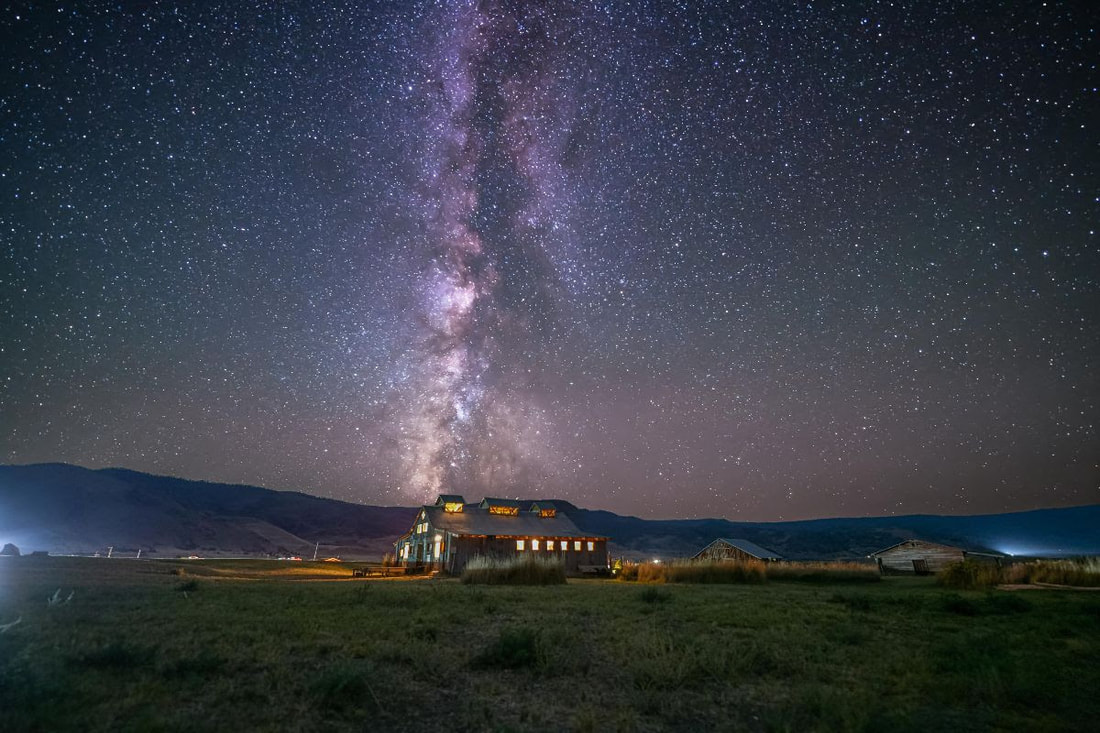
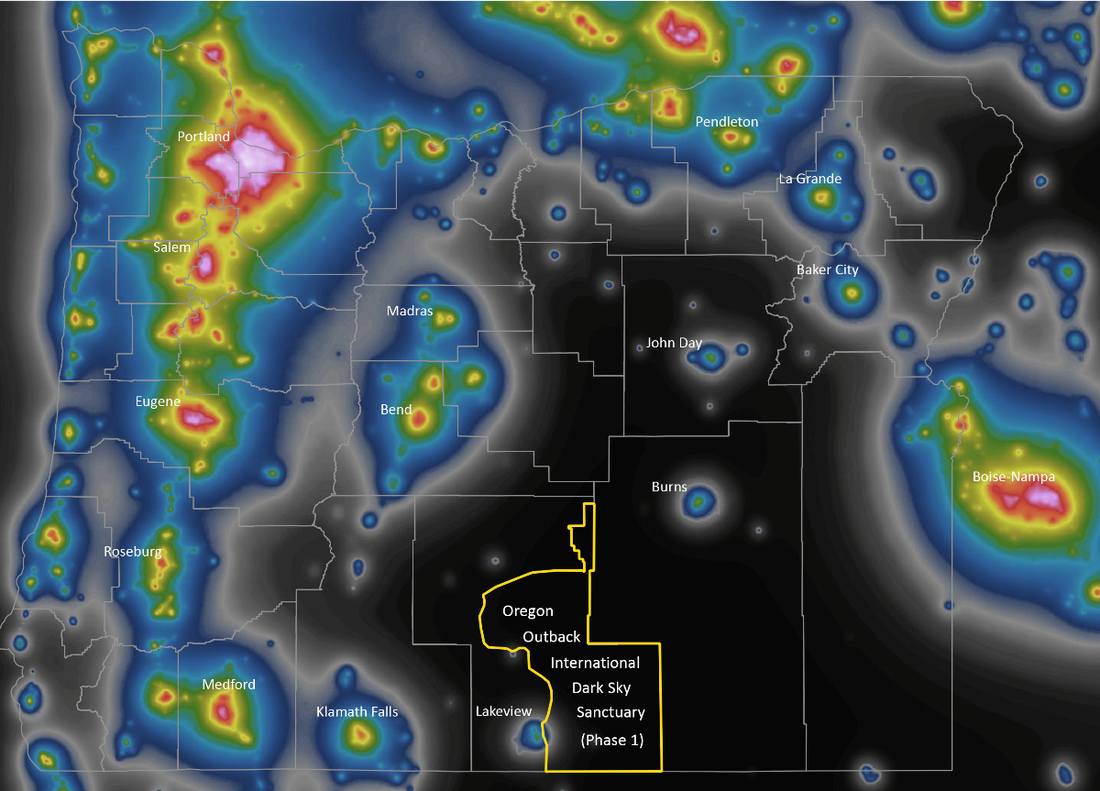
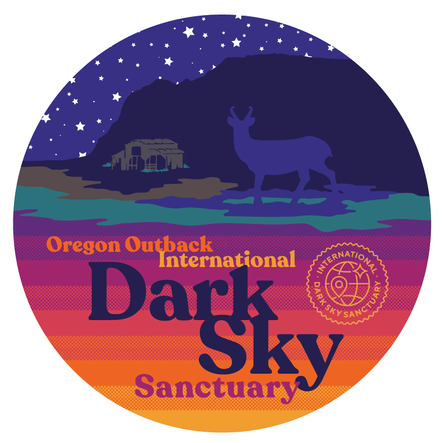
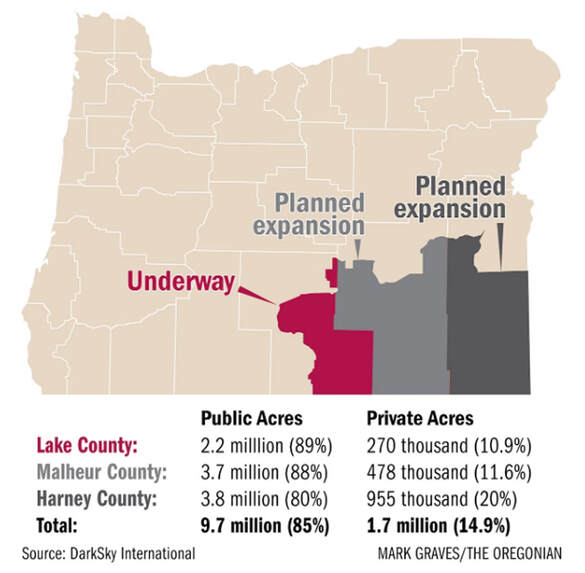

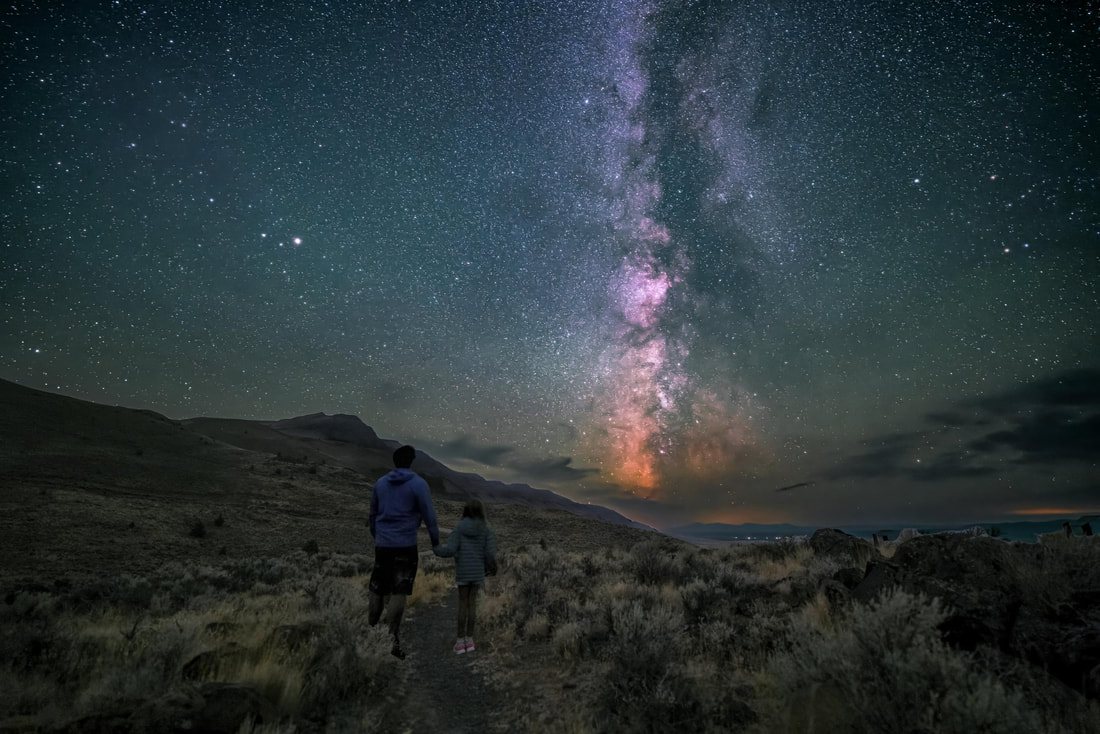
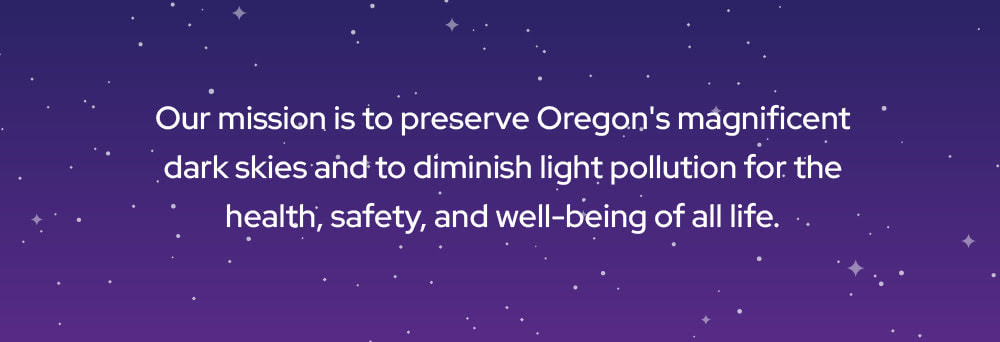
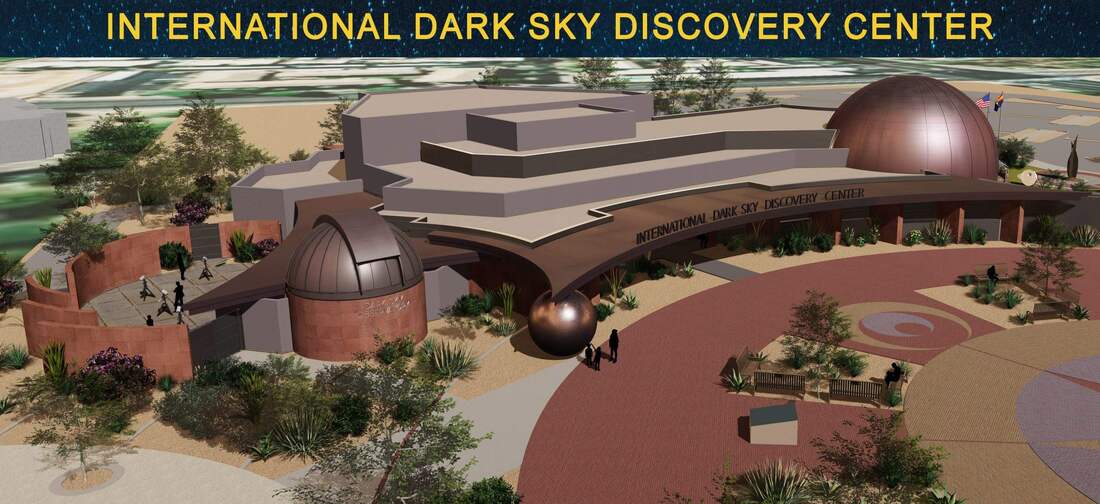
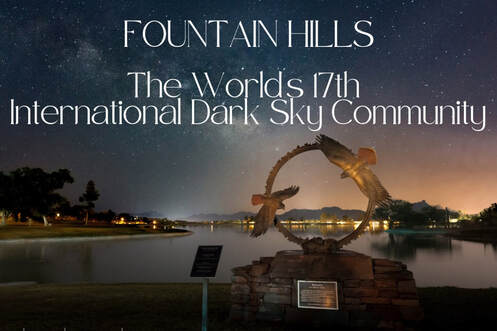
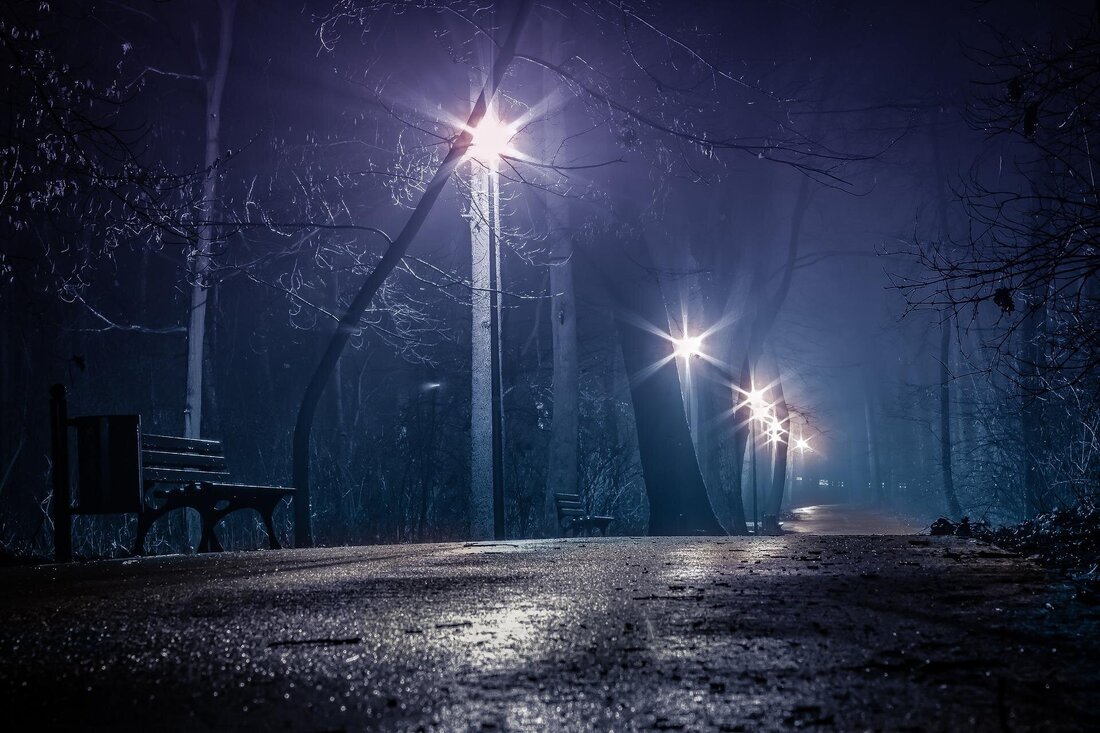
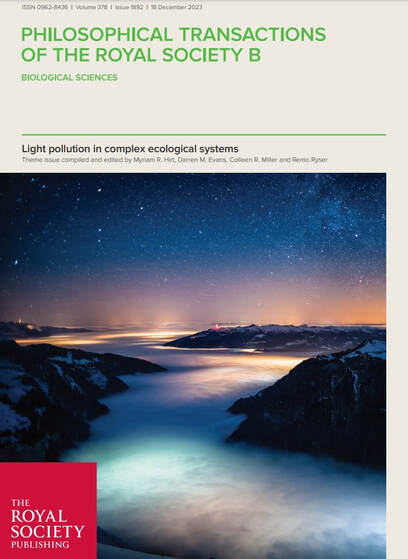
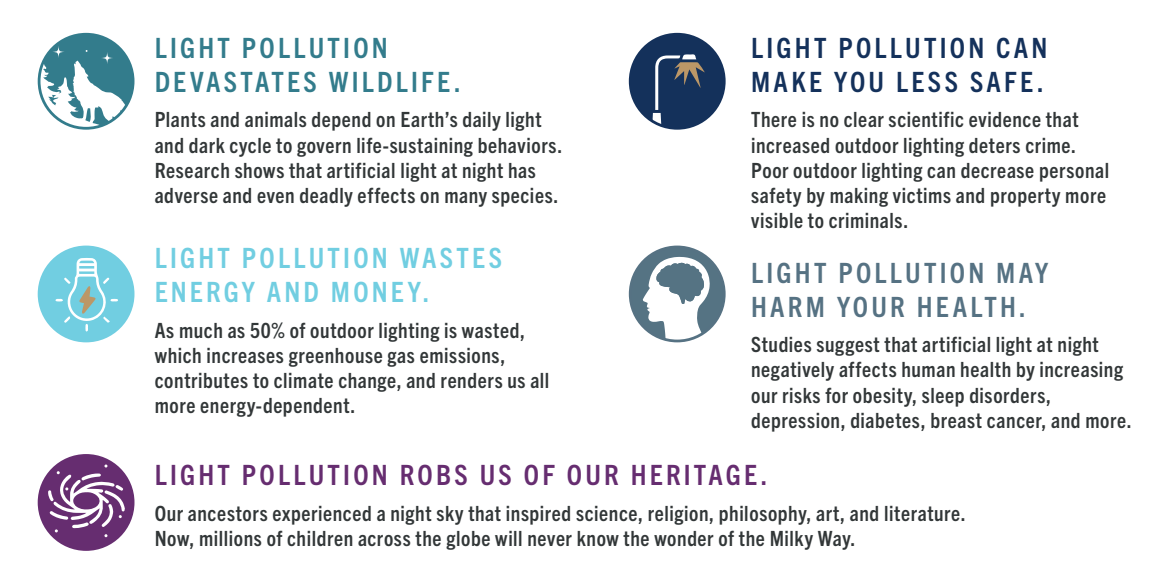
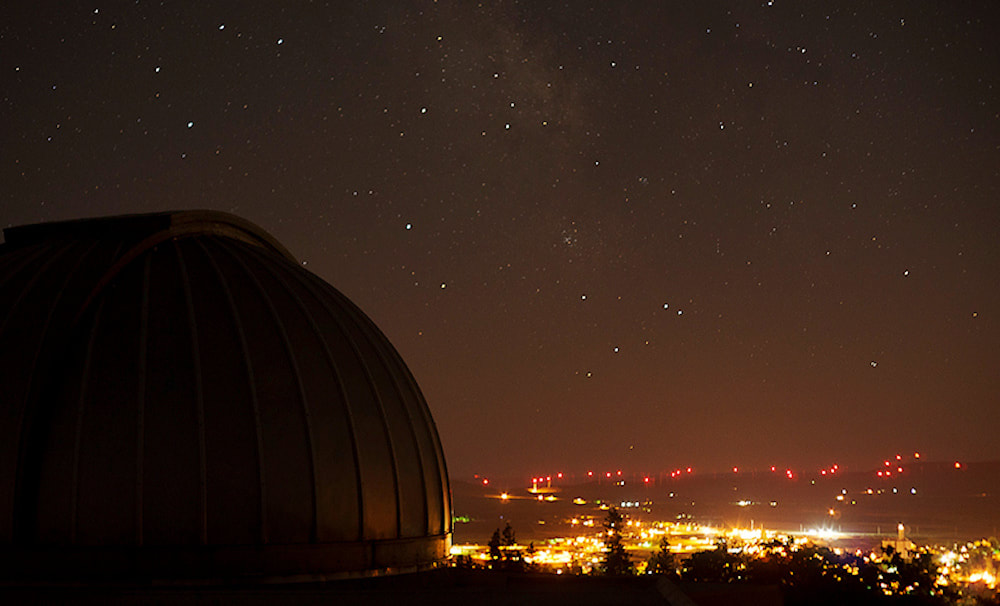


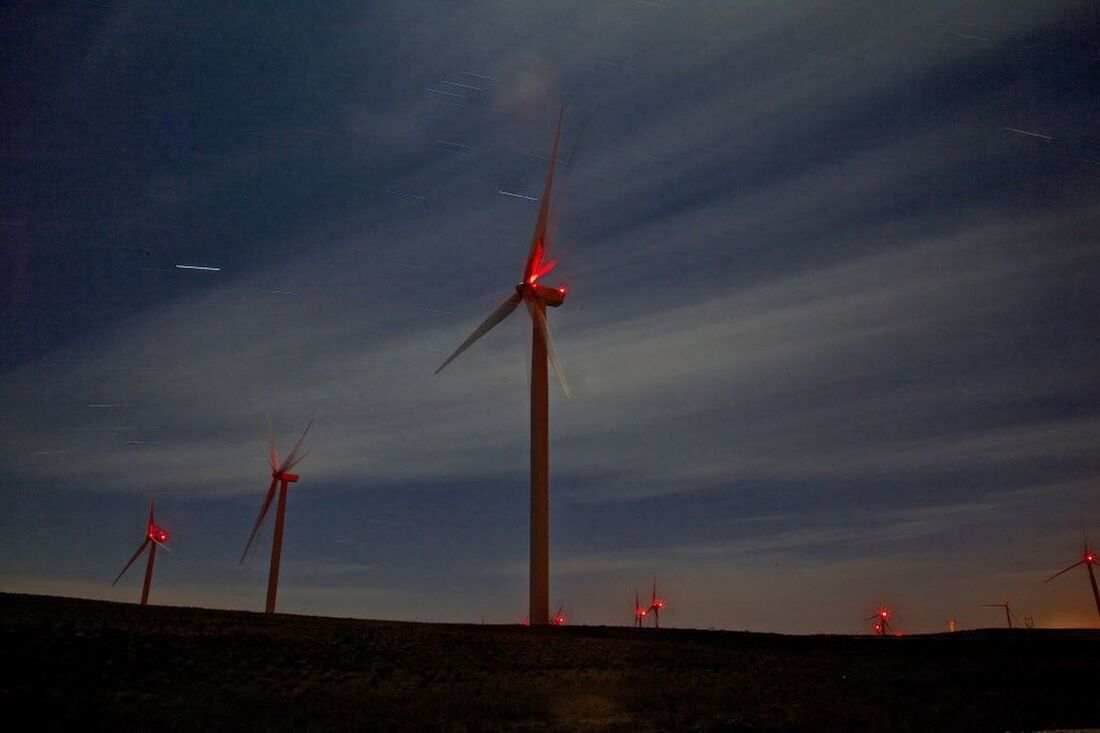
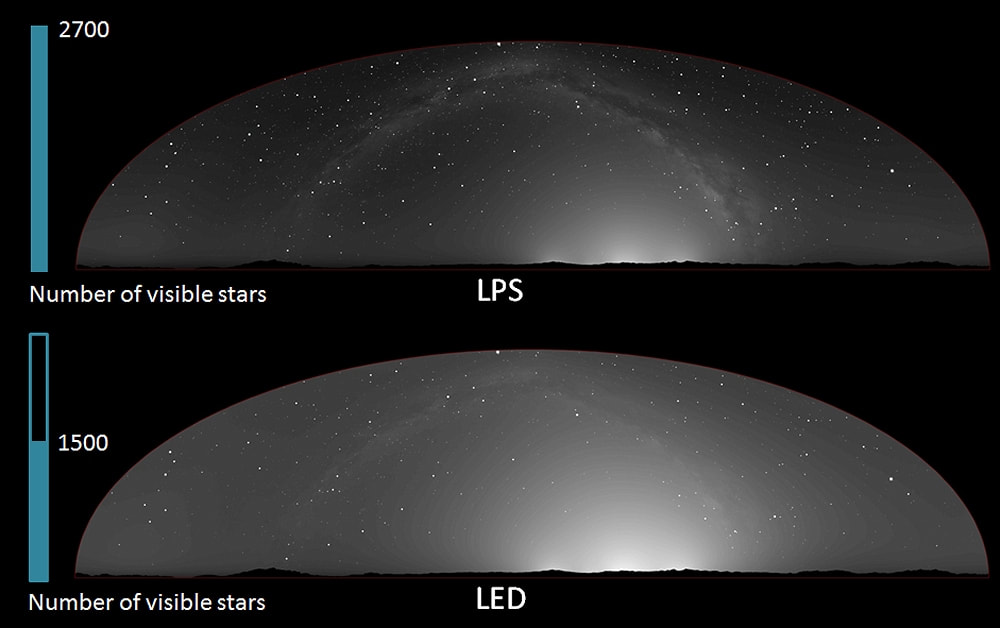

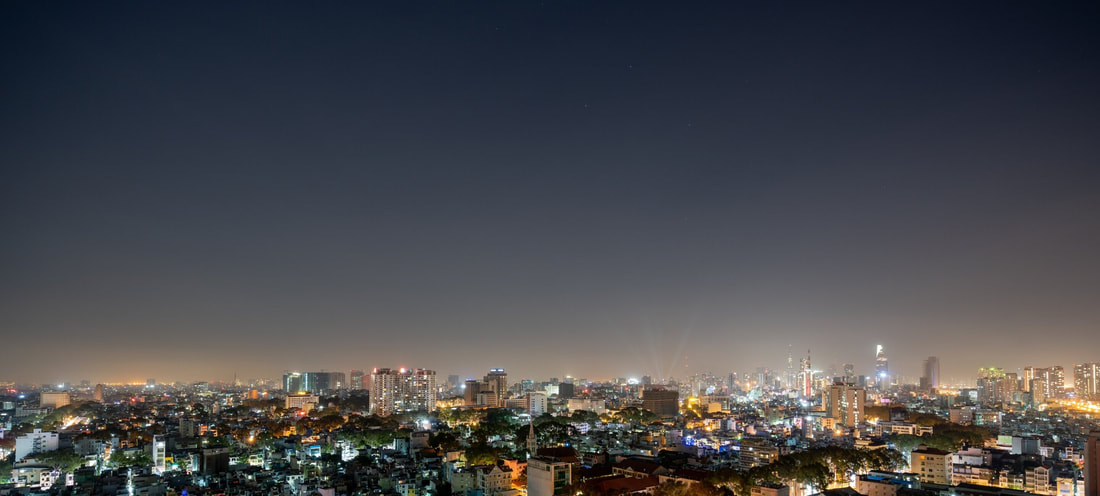
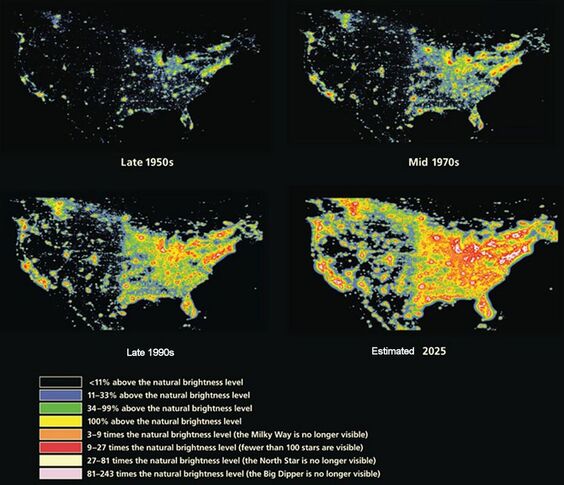
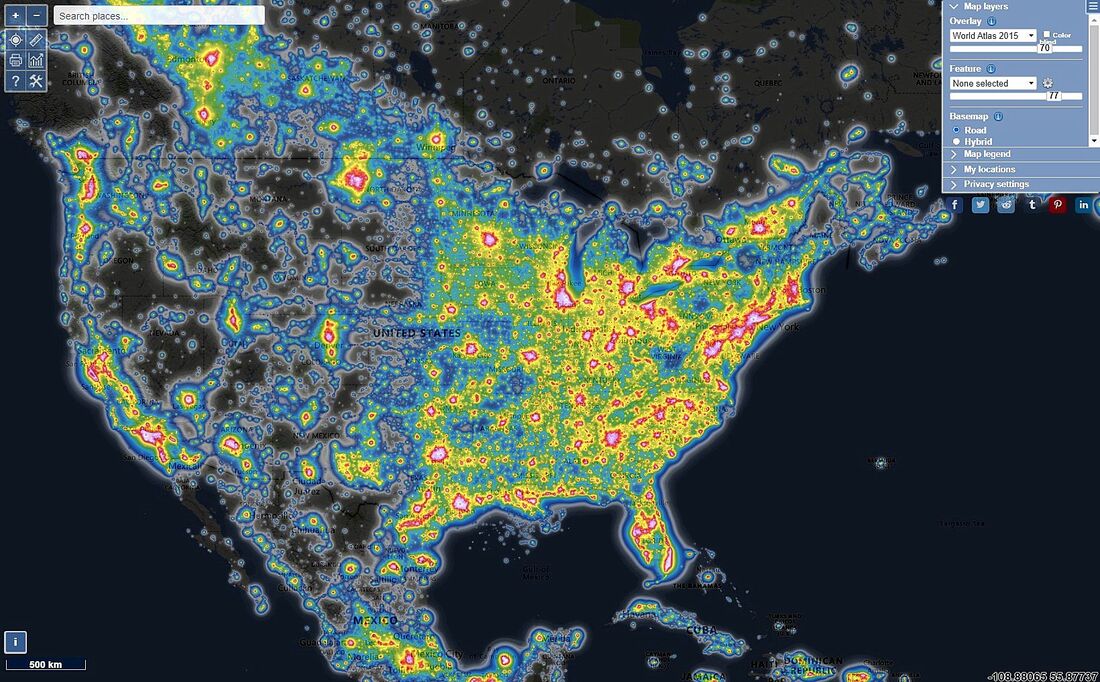
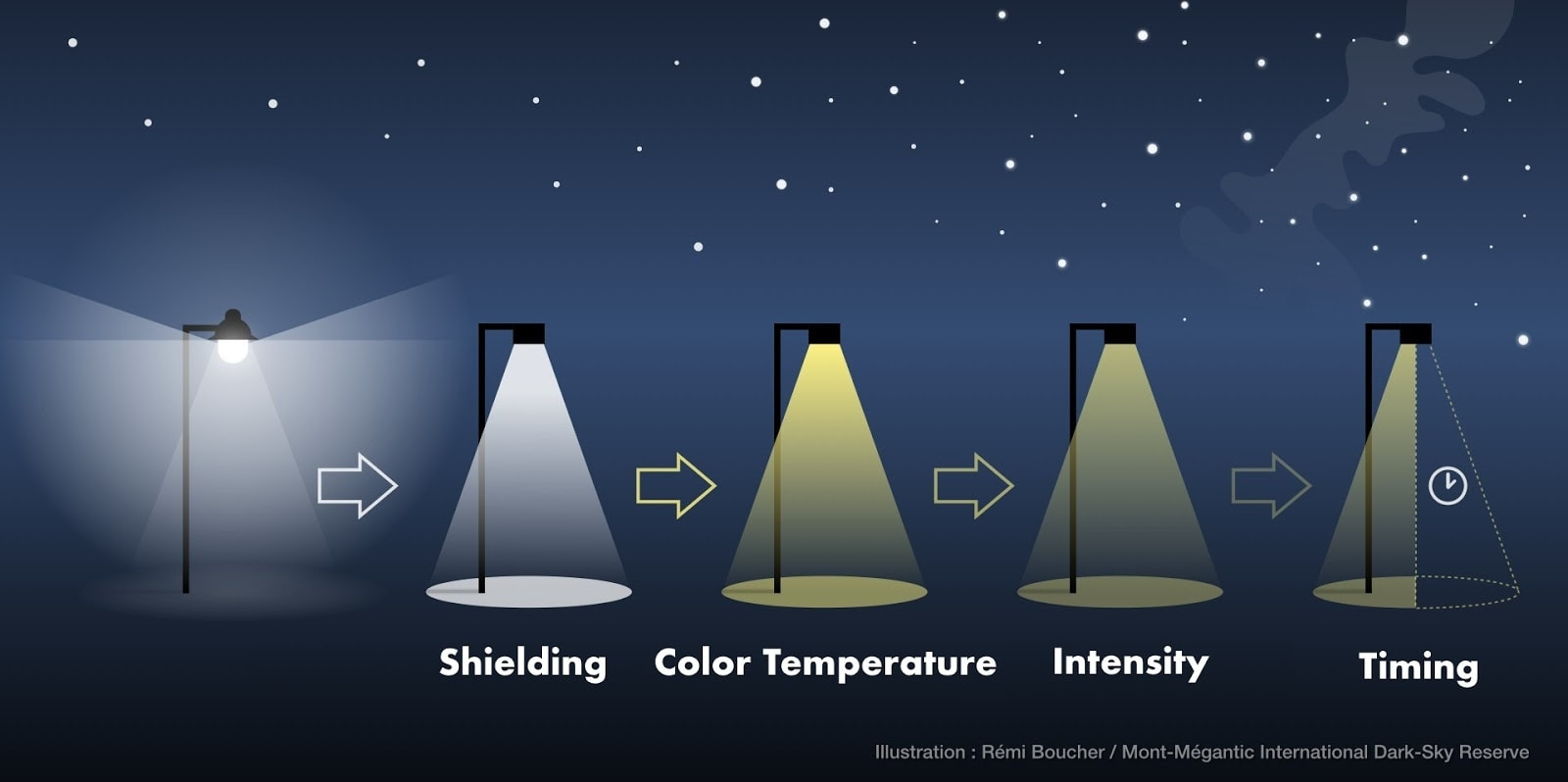
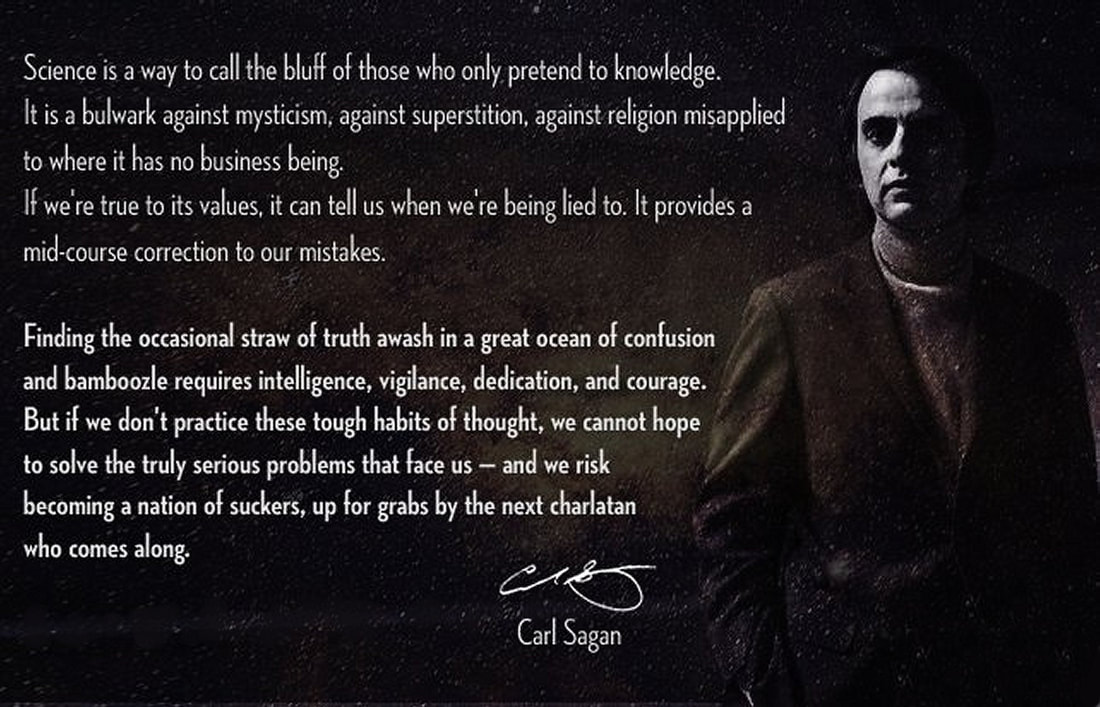

 RSS Feed
RSS Feed
